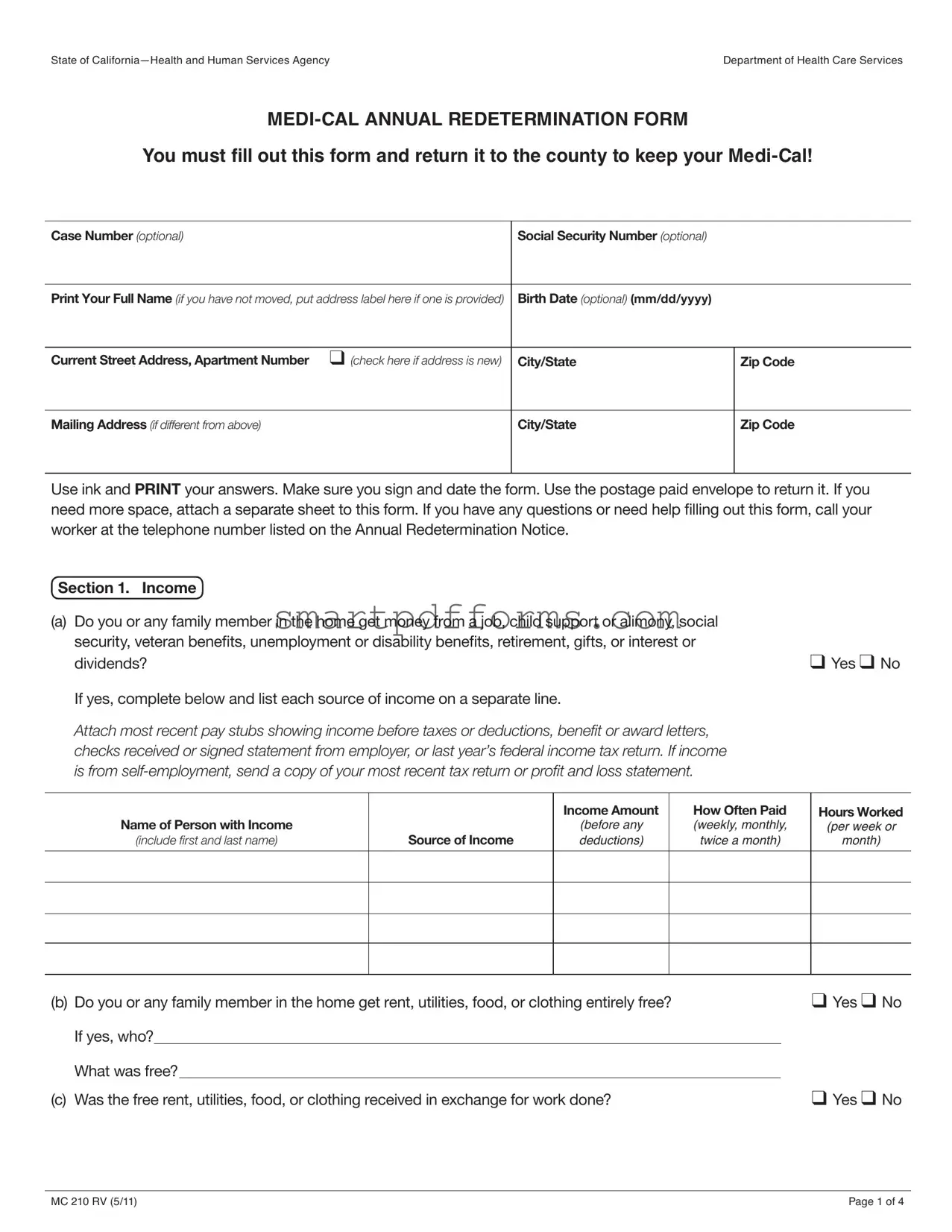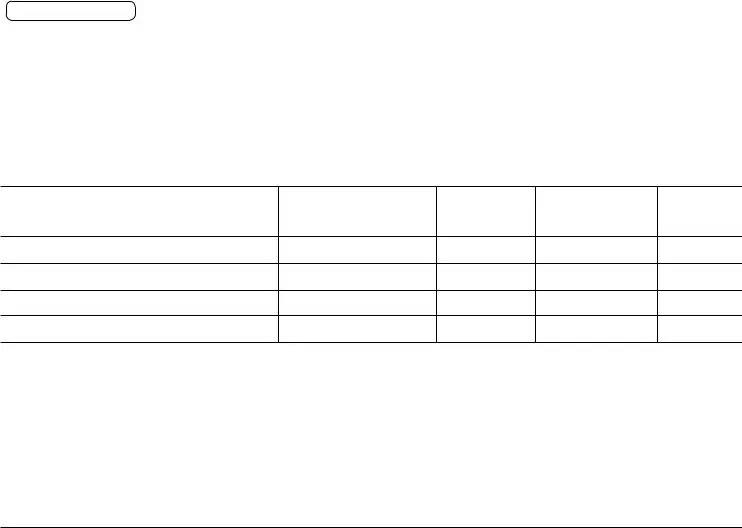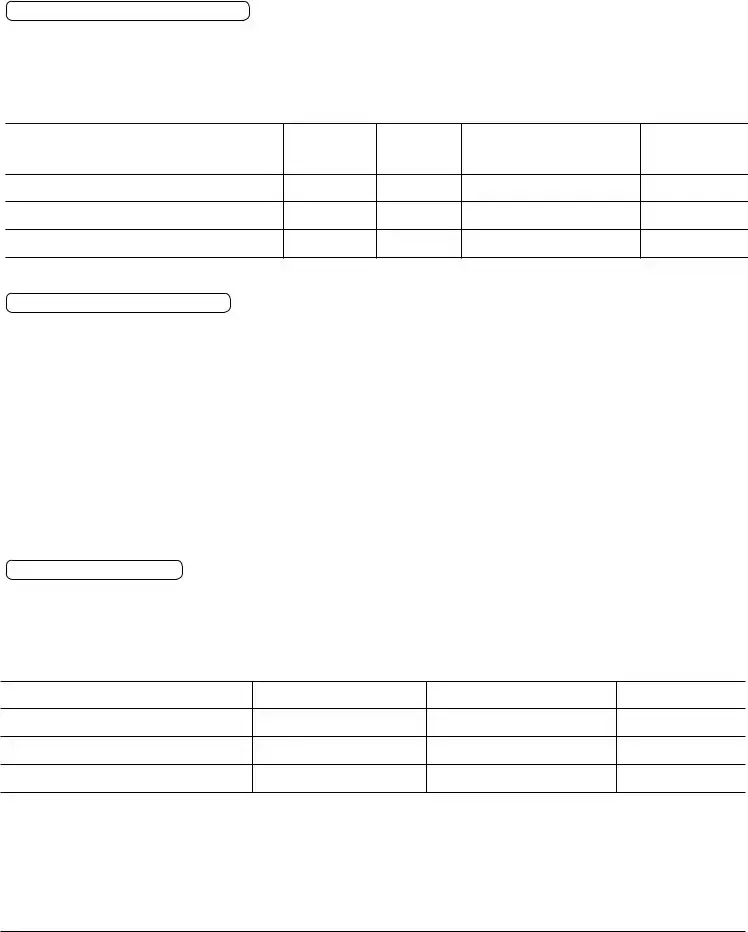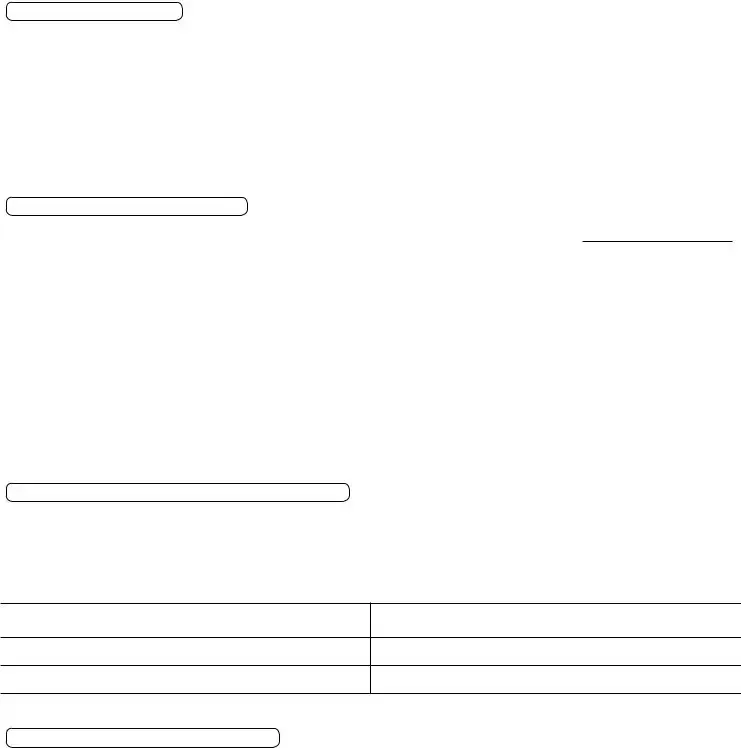The State of California Health and Human Services Agency's Department of Health Care Services provides Medi-Cal, a crucial healthcare service for many residents. Keeping Medi-Cal coverage requires annual redetermination, a process facilitated through a specific form known as the Medi-Cal Annual Redetermination Form. This vital document needs to be accurately filled out and returned to the county by the recipient. It covers a wide array of information, including case and social security numbers, address details, income, and expenses. Furthermore, it delves into other imperative segments like other health insurance, living situation changes, real or personal property, changes in immigration or citizenship status, and sections on blindness, disability, or incapacity. In addition to capturing essential data to determine continuous eligibility, the form also serves as a platform for requesting information on various supportive health programs, including the Healthy Families Program, the Child Health and Disability Prevention Program (CHDP), the Women, Infants, and Children Program (WIC), and the Personal Care Services Program. The comprehensive nature of this form underscores the State's commitment to ensuring those eligible have access to the healthcare services they need, emphasizing the importance of accurate and prompt submission to maintain those benefits.




